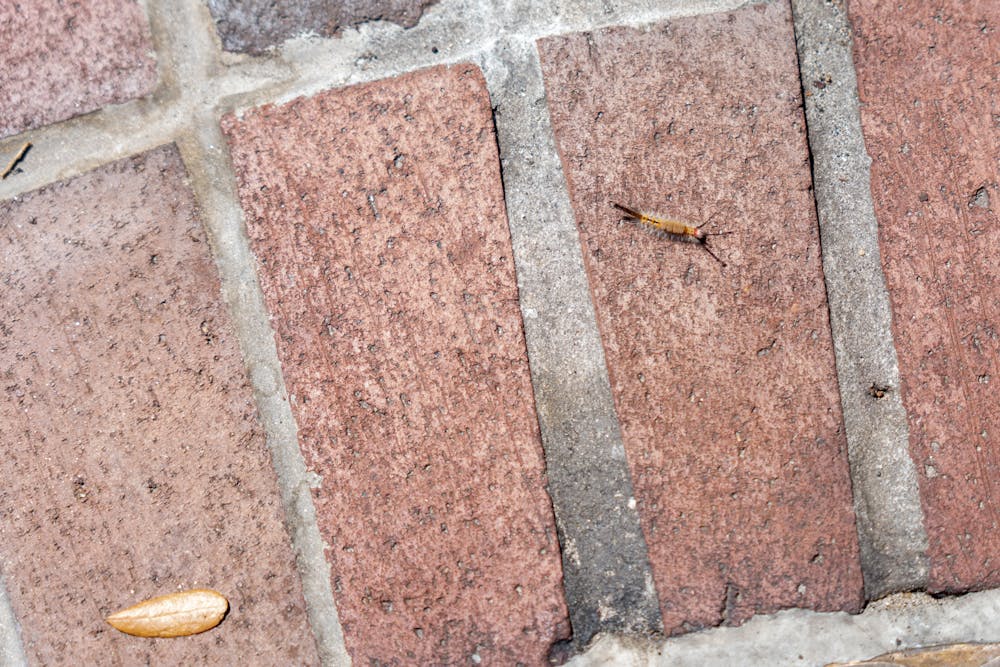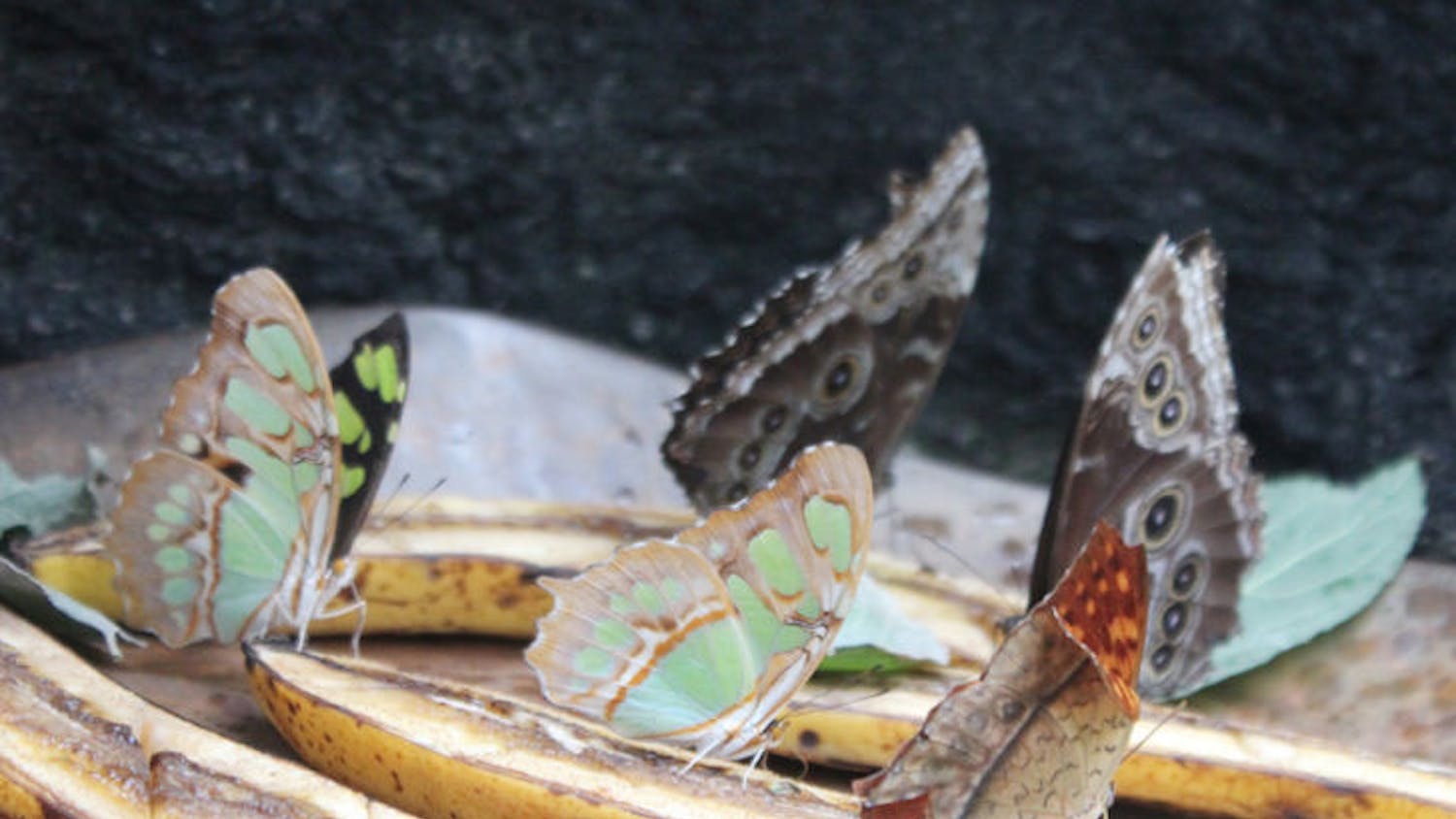Taylor Boyd was waiting for class to start when she saw something that made her heart drop. On her arm was a red-headed caterpillar with spiky white fur, one of the numerous caterpillars swarming Gainesville.
“I hate them so much,” the 19-year-old UF economics sophomore said. “Now I’m scared of them [and] watching my every step,” she said.
The caterpillars spotted across UF's campus are known as tussock moth caterpillars. They’re native to North America and typically emerge in North central Florida during the spring.
In Florida, there are three different species of tussock moth caterpillars: the fir tussock moth caterpillar, the white-marked tussock moth caterpillar and the definite tussock moth caterpillar. They have many shared characteristics, such as protruding hairs and spines, but can be visually distinguished by color.
Although the caterpillars may appear soft and fluffy to the touch, UF assistant entomology professor Adam Dale advises against touching them, as their hairs can cause irritation.
“It's not a major health concern, but it's just something to be aware of if it happens,” Dale said. “You just need to wash the area thoroughly and recognize that you might have some local skin irritation right there for a few hours.”
The caterpillars appear to be making a particularly abundant resurgence this year, to the extent where some areas are completely covered in the fuzzy creatures. Dale said it might be that the milder winter has boosted the survival rate of caterpillar eggs.
“Lots of moth species go through these cycles, where some years they're gonna have these huge, massive emergences, and then they kind of lay low for a lot of years and then they have these periodic booms,” he said.
The last time the tussock moth caterpillars were a trending topic was in 2012, when The Alligator reported several tussock moth caterpillar cocoons across UF’s campus. Before that, the most recent population surge was reported to be in 2001.
Corinne Griffin, a 22-year-old UF environmental science senior, had a similar experience to Boyd’s, only she found another caterpillar on her arm right after flicking the first one off. However, she said she tries to be mindful that they are living creatures, even though they can become bothersome.
“I actively try not to step on them,” she said. “And there's not a lot of places on campus, that I park in at least, that aren't under tree cover, so they're always all over my car. And I don't want to kill them, so I just leave them all over my car.”
Clusters of tussock moth caterpillars can be seen on certain sidewalks and lamp posts, their furry bodies wriggling around in search of food and resources. The caterpillars are especially plentiful under tree canopies, as they feed on leaves.
The mass influx of these caterpillars has even prompted UF to post an Instagram meme, where it cheekily refers to the caterpillars as “public enemy #1.” While many students in the comments section agree that the caterpillars are a terrible nuisance, some students like Nolan Ferguson, a 21-year-old UF studio art senior, found the post to be distasteful.
“My whole practice is about raising empathy and understanding and kindness for these animals,” Ferguson said. “And then to see the school that pays me to be kind to these things posting about how they're a nuisance and are a problem is kind of disrespectful to their whole existence.”
Angela Hilliard, a 20-year-old UF health science sophomore, shares Ferguson’s belief that it’s important to practice kindness toward the caterpillars, even if they do pose an inconvenience.
“Obviously they're very annoying and I would never fault someone for accidentally stepping on one, like I'm sure I've done it [because] they're everywhere,” Hilliard said. “But just be kind. They're living creatures.”
Contact Annie Wang at awang@alligator.org. Follow her on X @wynwg.
Annie Wang is a metro general assignment reporter and a second-year journalism major. She has previously worked on the university desk as the university administration reporter. She enjoys reading and writing book reviews in her spare time.






